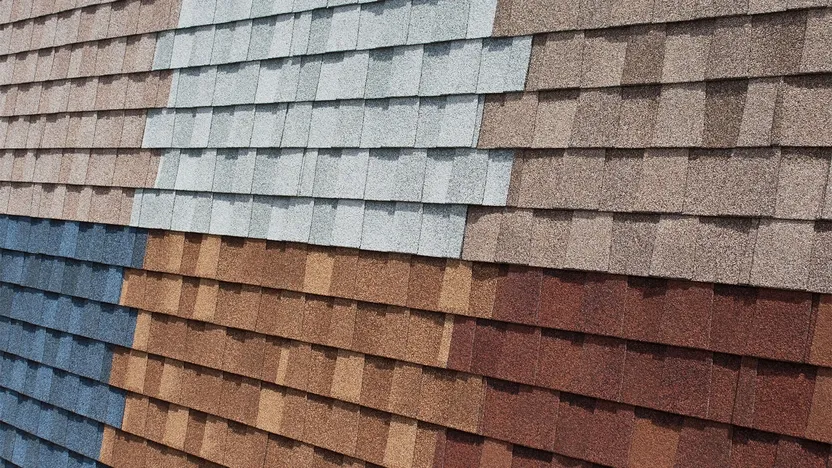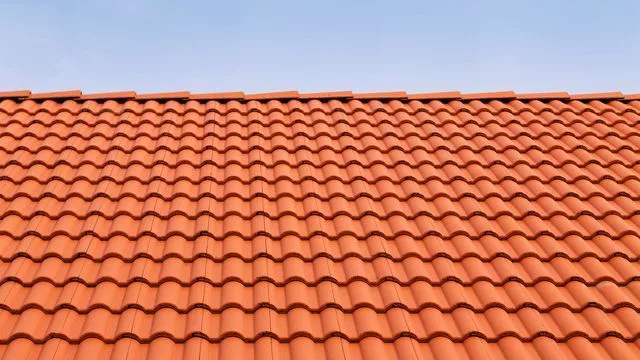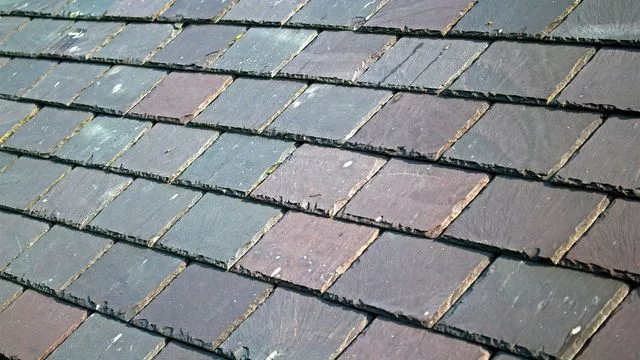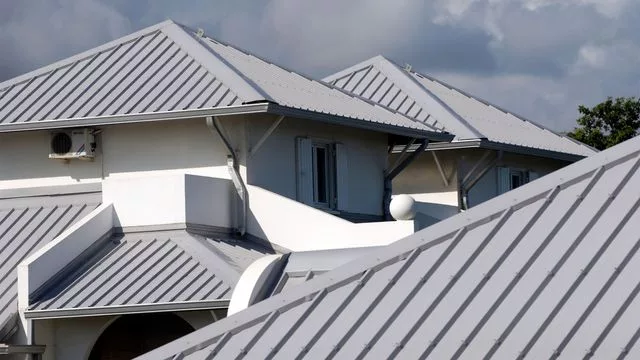Oct 10, 2023

Homeowners can often take the roof over their heads for granted. As long as your roof keeps the rain from getting in and doesn’t leak, it might be tempting to not pay it much attention.
Well, maybe it’s time to check in with your roof. As the old saying (kinda) goes, an ounce of prevention means you won’t be putting pots under dripping ceilings someday soon.
Whether you’re buying, selling, or just wondering when you’ll need to replace those shingles, it pays in many ways to know all the types of roofing available, their costs, and their pros and cons. This roofing primer has you covered—so go ahead and read on!
Asphalt shingle

Cost: $3.50 to $4.50 per square foot, according to HomeAdvisor.
How long it lasts: About 30 years.
Asphalt shingles claim 87% of the roof marketplace, says the Asphalt Magazine—and for good reason.
“Advances in the manufacturing and design of asphalt shingles have enabled them to emulate the look of slate, tile, or wood shake, providing a range of style and color options with lower maintenance and installation costs,” says Leslie Franklin, director of steep-slope marketing at GAF, the roofing manufacturing company based in Parsippany, NJ.
Pros: Asphalt shingles are durable. They sport a large selection of colors and textures and are relatively easy to install. Plus many meet Energy Star standards and help you cut energy bills.
Cons: They can blow off easily in high winds and crack in climates with large temperature fluctuations. And they last only up to 30 years—a relatively (and deceptively) short time for a roof.
Tile shingle

Cost: $8 to $18 per square foot.
How long it lasts: 5+ years.
Those gorgeous, rust-colored shingles that top Spanish- or Mediterranean-style homes are tile shingles, and are among the most commonly used roofing product. Tile shingles can be flat or curved and made from clay or concrete.
Pros: Because air circulates underneath, tile shingles make your house cooler in summer and warmer in winter, cutting energy bills. This planet-friendly material has no chemical preservatives and can be recycled. And since each tile is laid individually, it’s easy to repair.
Cons: Tile shingles may last, but they are pricey. They’re also heavy and can require extra roof support (check with an engineer before installing them). And you’ll have to step carefully while on the roof doing chimney or gutter maintenance, because they’re fragile and can break easily.
Slate shingle

Cost: $5 to $15 per square foot.
How long it lasts: 50 – 200+ years.
Slate is also expensive, and installation by specialized roofers could add an additional money per square foot to your costs. But many homeowners think slate’s unique colors and textures—after all, it’s stone—make the material well worth the extra money.
Pros: It’s hard to argue with their natural beauty and wide range of colors, including reds, blacks, grays, and purples. Plus they can easily last for 200 (!) years, are water-resistant and noncombustible; and are impervious to temperature fluctuations, fungus, and mold.
Cons: Aside from the expense, slate can break if walked on and can add thousands of pounds to your roof, which may have to be structurally reinforced.
Wood shingle and shake

Cost: $4.50 to $9 per square foot.
How long it lasts: 40 years.
Wood (cedar or redwood) roofing, be it precisely milled shingles or irregularly cut and rustic-looking shakes, add natural beauty to your home. They are a midrange roofing option that’s more expensive than asphalt but not as high-end as tile or slate.
Pros: Homeowners love their natural beauty, and they often look better with age; plus they last about 10 years longer than asphalt. Wood is also storm-resistant and a great insulator that can help cut energy bills.
Cons: Their complex overlapping and interlocking structure makes wood shingles and shakes hard to install. Plus it is more likely to catch fire than other roofing material, is prone to termite and mold problems, and can warp or crack. Repair and replacement can be difficult.
Metal roofing

Cost: $6 to $16 per square foot for steel.
How long it lasts: 40 to 70 years
Whether your roof is flat or pitched, metal roofing can be a durable, environmentally friendly choice that can last more than twice as long as asphalt roofs. Residential metal roofing is primarily made of aluminum or steel, although copper, zinc, and titanium can be used for some homes. Steel roofing is produced in rolls, coated to prevent rust, painted, and then formed into long panels or stamped into individual shingles.
Metal roofing can resemble wood shakes, slate, or clay tiles, and comes in a rainbow of colors. You can also install a metal roof over an existing roof, eliminating tear-off and disposal costs.
Pros: Reflective pigments on metal roofs increase home energy efficiency and lower utility bills. It’s also lightweight and 100% recyclable.
Cons: Metal roofing can be noisy during heavy rain and hailstorms, plus improperly installed panels can loosen as they expand and contract during temperature fluctuations. Colors can be hard to match during repairs, and low-grade metals can be less durable and more prone to rust.
Source- https://www.realtor.com/advice/home-improvement/types-of-roofing-pros-cons-and-costs/






